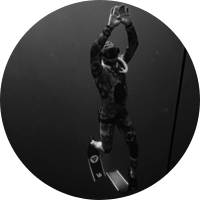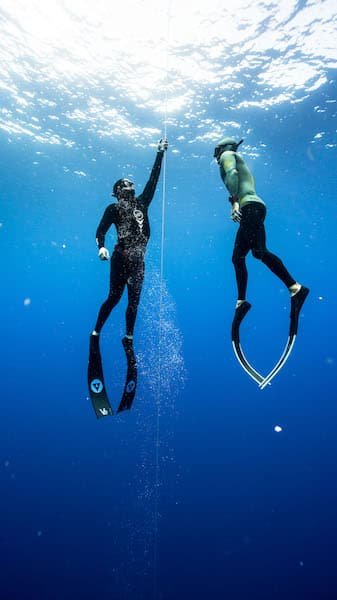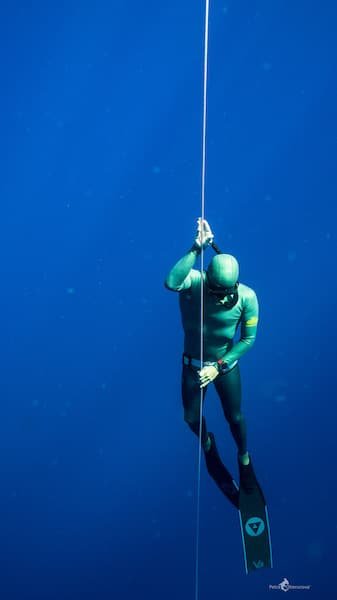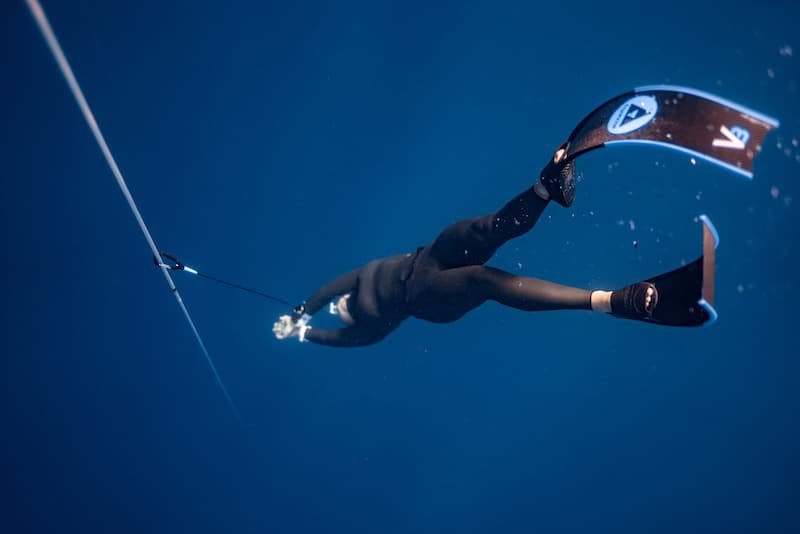
 Christian Daehler
Spearo - Instructor - Freediver
Christian Daehler
Spearo - Instructor - Freediver

 Christian Daehler
Spearo - Instructor - Freediver
Christian Daehler
Spearo - Instructor - Freediver
Prepare for your first freediving course with essential insights and practical advice. Explore safety precautions, body care, aquatic comfort, and understanding respiratory muscles to ensure you're well-prepared for an enriching freediving journey, whether you're a beginner or refining your skills. Dive in and equip yourself for a fulfilling and rewarding experience.
My initial suggestion might be unexpected because I'm going to advise you to disregard the idea of holding your breath in preparation for your freediving course. There are significant safety considerations to bear in mind when holding our breath, and until we understand those fully, it's unwise to put ourselves at risk by attempting breath-holding exercises. Moreover, achieving a successful breath hold involves various factors that need to be addressed beforehand, during, and after the breath-holding attempt. Without proper instruction, we're only practicing inefficiently and potentially developing harmful habits. Therefore, it's best to wait for your instructor to impart the necessary techniques and habits before attempting breath-holding exercises.

Small details such as maintaining hydration before your course, avoiding heavy meals prior to diving activities, and taking precautions against seasickness, especially if your ocean session will take place in open waters rather than a calm, confined body of water, are crucial. Neglecting these factors can detract from your overall performance and success during the course.

One of the key factors for success in a freediving course is ensuring that you feel completely at ease in the water and with your dive equipment. Understandably, not everyone invests in dive gear prior to their course, as many courses offer options to rent or purchase gear during the program. If this applies to you, there's no need to worry; just recognize that the more comfortable you are with basic aquatic activities like swimming laps, treading water, using fins, and breathing through a snorkel, the smoother your transition will be when learning new techniques and maneuvers from your instructor during the course. To enhance your comfort level, it's highly beneficial to practice swimming laps and breathing exclusively through a snorkel in the pool. Additionally, when taking breaks, aim to float motionlessly on the surface, facing down, and continue breathing through your snorkel as calmly as possible. Mastering these fundamental skills will greatly facilitate your ability to grasp the more intricate techniques your instructor will introduce during your freediving course.

Another aspect to consider during a freediving course is the variety of muscles involved in breathing. I often advise my students to place one hand on their chest and the other on their stomach. Taking a normal breath, they observe whether their chest rises, their stomach rises, or both hands move. This helps identify the primary breathing muscles: the diaphragm, stomach, intercostals, or chest muscles. Once we have a clearer understanding of our natural breathing pattern, we can begin to focus on isolating diaphragmatic breathing. This involves consciously filling the belly with air while minimizing movement in the chest area. Developing comfort with diaphragmatic breathing facilitates the next step: fully expanding the stomach with each breath. Initially, this transition between diaphragmatic and chest/intercostal breathing may occur seamlessly, but with practice, we can pinpoint where the shift happens and strive to halt just before it occurs. By practicing this technique while sitting or lying down comfortably, we enhance our ability to breathe efficiently using different muscle groups, making it easier to learn advanced breathing techniques taught by our freediving instructor.